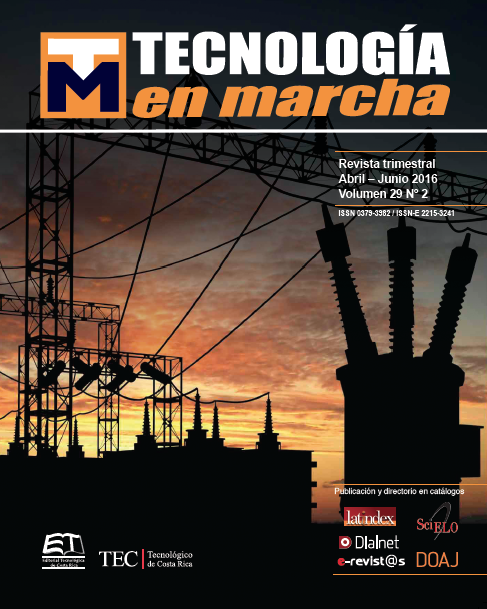Pellet manufacturing potential of forest residuals of Cupressus lusitanica and Tectona grandis in Costa Rica
Main Article Content
Abstract
The process of transformation and sawmilling of sawlog generates residuals that can be used as sources of raw material for the production of pellets. The aim of this study was to evaluate the efficiency, pellet quality for x-ray photographic and the energetic, physical and mechanical properties of pellets fabricated from residuals obtained from processing sawlogs of Cupressus lusitanica and Tectona grandis. The results showed a percentage of low efficiency for both species, 25% for C. lusitanica and 20% for T. grandis. In the quality evaluation, pellets were found that pellet fabricated with C. lusitanica pellets is characterized by having high density areas (about 1300 kg m-3) and few cracks of short size on the surface. But the pellets of T. grandis residues present an irregular density (high and low density in the pellet) and present deeper and longer cracks. Regarding the properties evaluated, it was found that the pellets of T. grandis were characterized by having a lower apparent density, lower net calorific power, lower resistance to compression and lower uniformity in the density of its surface and a greater percentage of ash, moisture content and mechanical durability, if they are compared with pellets of C. lusitanica.
Article Details
Los autores conservan los derechos de autor y ceden a la revista el derecho de la primera publicación y pueda editarlo, reproducirlo, distribuirlo, exhibirlo y comunicarlo en el país y en el extranjero mediante medios impresos y electrónicos. Asimismo, asumen el compromiso sobre cualquier litigio o reclamación relacionada con derechos de propiedad intelectual, exonerando de responsabilidad a la Editorial Tecnológica de Costa Rica. Además, se establece que los autores pueden realizar otros acuerdos contractuales independientes y adicionales para la distribución no exclusiva de la versión del artículo publicado en esta revista (p. ej., incluirlo en un repositorio institucional o publicarlo en un libro) siempre que indiquen claramente que el trabajo se publicó por primera vez en esta revista.

